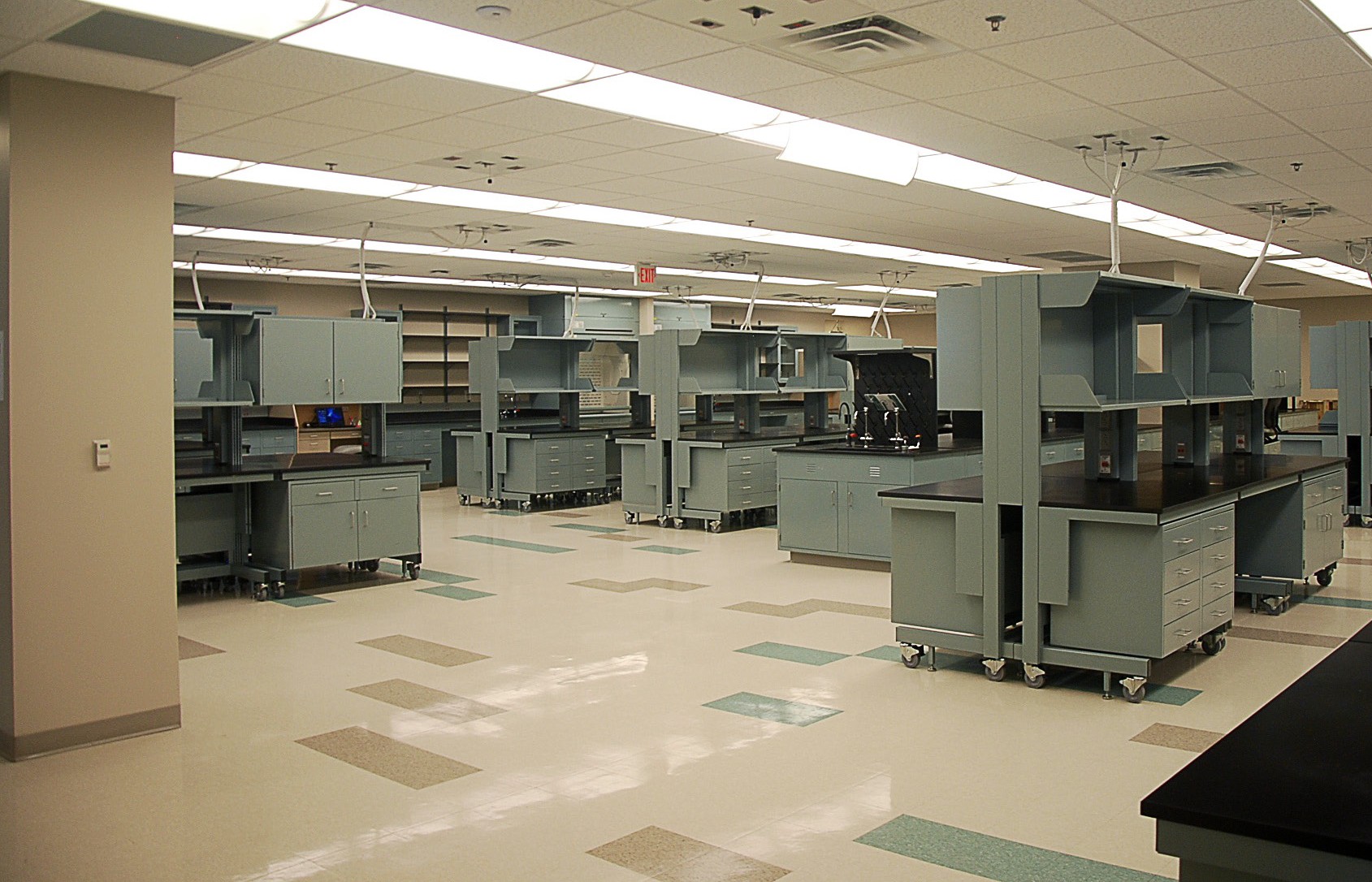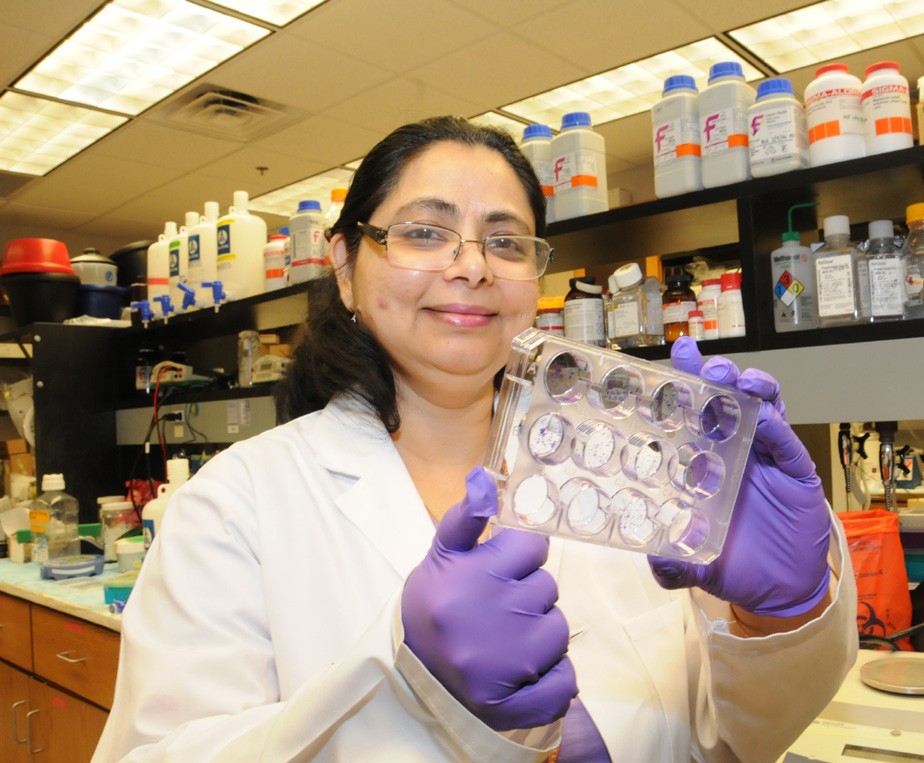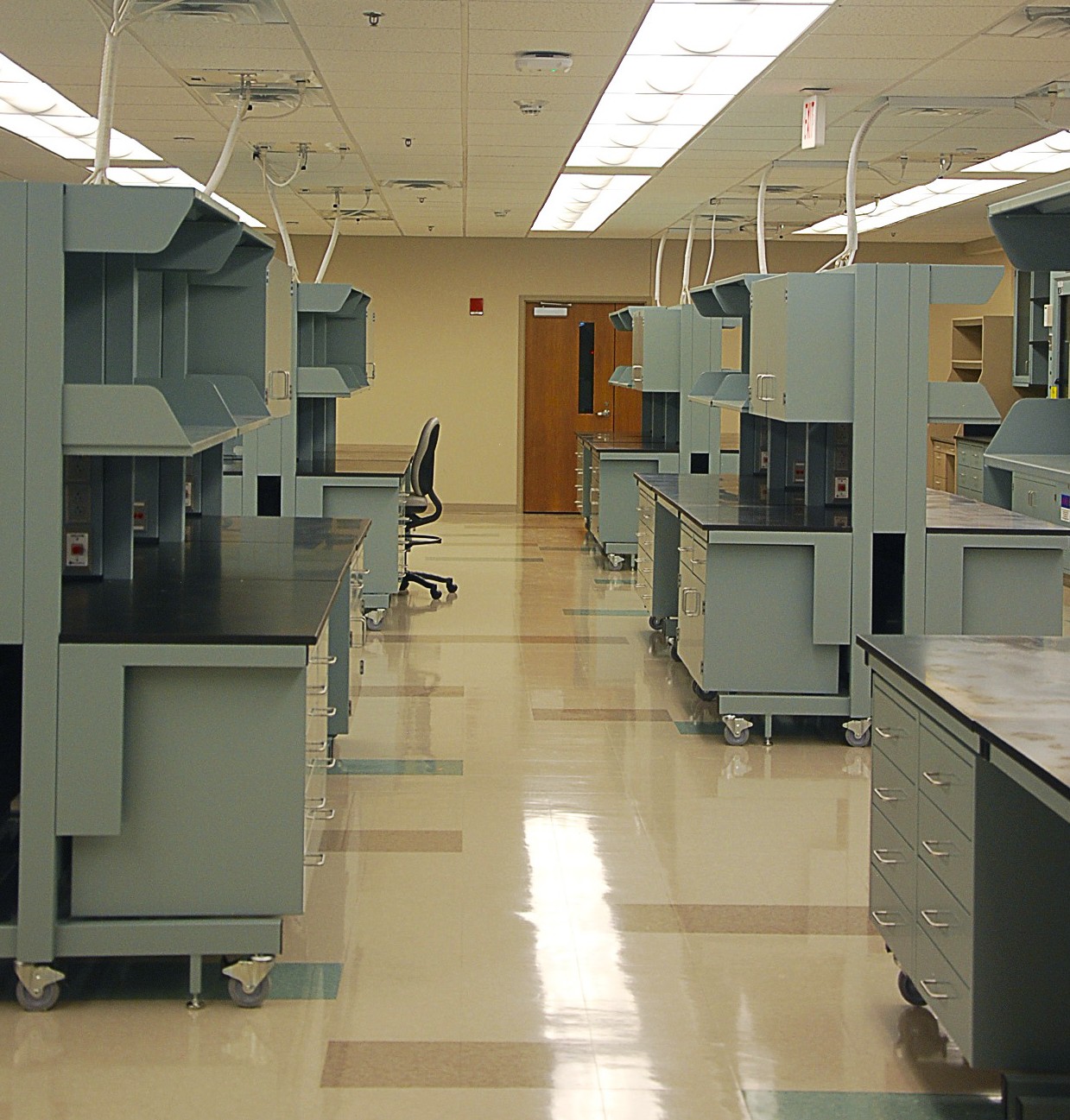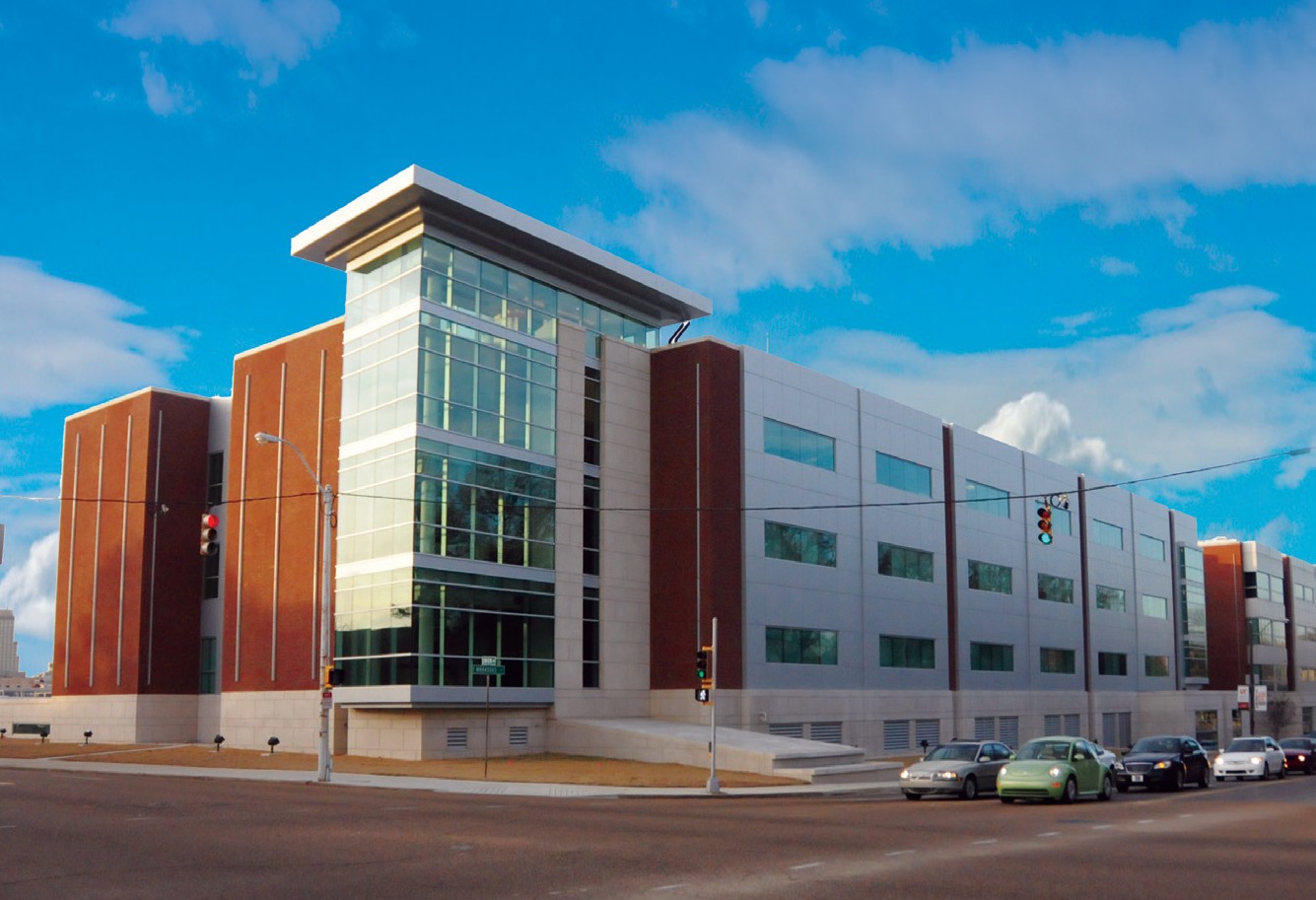



TENNESSEE
HEALTH SCIENCE CENTER.
Allocation of Research Space Plan
2016
The University of Tennessee Health Science Center: Allocation of Research Space
Introduction
The University of Tennessee Health Science Center (UTHSC) has the tripartite mission of patient care, education and research, with the overarching goal of promoting the welfare of the citizens of Tennessee, the Nation and the Global Community.
Meeting the current and future needs of the University’s biomedical research program requires optimal usage of research space (a valuable and limited resource) throughout UTHSC. To accomplish this requires an open and transparent process that guides the assignment and usage of space. Moreover, there needs to be a clear procedure for the solicitation and allocation of research space that is consistent with existing metrics. The following general principles and guidelines will be used to make recommendations in these processes. The ultimate use and allocation of research space is the responsibility of the Chancellor. The Chancellor has entrusted the responsibility for the oversight of research space guidelines to the Vice Chancellor (VC) for Research (in consultation with the Deans). Using the space formula, the VC for Research shall, following vetting the research space survey data with the Deans, report annually to the Chancellor on research space availability and utilization. The Chancellor will bring the report before the Research Council for review and discussion. After a three year monitoring period, and thereafter at three year intervals, the VCR will make recommendations to the Chancellor regarding space allocation to the colleges based on the formula. The Chancellor will bring this college space allocation proposal to the Research Council for review and discussion. Once space allocation to the colleges is determined by the Chancellor, the Deans or their designees will then assign allocated college research space to their faculty. College space allocations by the University (Chancellor) will consider the space formula, new start up commitments to colleges and individual faculty, and new defined initiatives in research space allocation. It is expected that in general the Deans and their designees will commit and reclaim space to faculty using the general guidelines of the space allocation plan.
Space Allocation Considerations
In determining the allocation of research space to a faculty member, the type and scope of research as well as the building where it is conducted should be carefully considered. It is understood that some types of research (e.g., dry laboratory computer-based vs. wet laboratory research) require more or less space than others. Given the ever-increasing complexity of contemporary research, it is common for individual investigators to need more space than in the past to accommodate multiple procedures or approaches (e.g., behavioral testing, physiology, microscopy). Some types of research are better suited to enclosed rooms dedicated to a single investigator while other types of research are better suited to a large open bay arrangement that is more conducive to sharing of space and equipment among multiple investigators. Additionally, individual assignable laboratory modules or units in different campus research buildings have different square foot (ft2) footprints. Also, there are differences in the quality of research space and support facilities due to the age of the building, and thus, more competition for space allocation in newer, state of the art buildings with pristine core facilities than older buildings. Finally, allocation of research space should include consideration of issues related to proximity of animal vivaria and the specifics of animal use conducted by the investigator (e.g., research that can be accommodated within LACU protocol rooms vs. research that must take place in the investigator’s lab).
The space utilization guidelines in this document were developed in recognition that presently the single largest source of external funding at UTHSC is via NIH, and that R01 type grants account for the majority of this funding. In this regard, the Institutional Space Committee assessed the laboratory space allocations in a number of buildings necessary to support the research of PI’s with R01-scale funding, and developed a modular wet laboratory space allocation unit based, in part, on these data. This is not to say that other types of federal and private funding are of secondary importance. Actual recommendations of space allocations will be scaled up or down from this modular guideline depending on the total amount of funding irrespective of the source. The metric formula for lab space assignment will be based on awarded modified direct costs (MDC) averaged over a three-year period. Although the level of extramural funding, building and type of research are key factors in the space allocation formulas below, other sources of research support (e.g., gift and development funds, endowments, pilot project funds) should also be considered in the actual space assignment to faculty. It is also recognized that the cost of various types of research can widely vary (e.g., research conducted in mutant animals vs. mutant microbial cell culture systems) and hence funding levels alone are not always indicative of research significance or the amount of space required to pursue a funded research project successfully. In addition, some laboratories provide research experience for students, fellows (including clinical fellows), and mentored faculty who are not necessarily supported by the PI’s funding and the number of such personnel using the space should also be factored into the assignment.
The amount, quality and type(s) of campus research space are continuously evolving and it is recognized that the allocation guidelines and formulas will need to be re-evaluated at three year monitoring intervals. In particular, campus research space will undergo major transitions over the next three-five years as some research buildings (Crowe and Mooney) will go off-line, some will be renovated (Nash/Nash Annex building), and new research space will become available (Translational Science, Pharmacy, Cancer and Van Fleet buildings). During this time, groups of investigators will be given temporary space that may not be compatible with the metric formulas below. We recognize that current reporting does not distinguish wet vs. dry laboratory space and some dry laboratory research may take place in wet laboratory space and vice-versa. For this reason, the determination of dry laboratory space currently remains a work in progress and the guidelines below may need revision when more specific information becomes available. Similarly, a thorough analysis of space for clinical research will be necessary for planning future growth and space allocation in this area.
Space Allocation Metrics
It is important to recognize that the formulas below are considered as guidelines for allocation to individual faculty members. The three-year evaluation process will use these formulas for recommendations of space allocations to units and colleges.
Class A Space:
This category designates newer campus research buildings (i.e., <10 years old); e.g., Cancer Research, Translational Science, and Pharmacy buildings. The recommended MDC formula is
$250/ft2, which translates to 1000 ft2 per R01 equivalent, exclusive of faculty and research staff office space. For the open bay floor plan in the Translational Science Research Building, the recommended allocation is three bay units per R01 equivalent, plus use of shared equipment and storage rooms, and use of tissue culture rooms. Within three years the Nash and Nash Annex should come on line as class A space.
Class B Space:
This category designates older buildings renovated, refurbished or upgraded in the last 10-15 years (e.g., Wittenborg-Johnson, Molecular Science, and parts of the Van Fleet building). In several of these buildings (e.g., Wittenborg and Johnson), office space separate from the laboratory is not available, and this reality should be taken into account when precise recommendations are developed. The MDC formula is $192/ft2, which translates to 1300 ft2 per R01 equivalent, exclusive of faculty and research staff office space.
Class C Space:
This category designates antiquated buildings with intermittent or even frequent infrastructural problems (including core equipment and support facilities); e.g., the Coleman building and the Boling Building. It is recognized that such problems will impact research productivity. The MDC formula is
$167/ft2. This translates to 1500 ft2 per R01 equivalent, exclusive of faculty and research staff office space.
Dry laboratory space:
The recommendation for dry laboratory space allocation is 50% of the respective R01 wet laboratory space for each Space Class: $500/ft2 for Class A, $384/ft2 for Class B, $334/ft2 for Class C.
Additional Considerations:
- Research space will be assigned to a new faculty member for a minimum period of five years. Faculty members are expected to be actively submitting grant applications during this period of time. Specific arrangements in the faculty member’s appointment letter may supersede the formulaic guidelines. New faculty that do not possess external funding will receive research space equivalent to one R01 equivalent specified below, unless additional space is negotiated in the appointment letter.
- For Multi-PI grants, Modified Direct Costs on a grant award will be split equally amongst the PIs in the calculation of assigned space.
- Faculty who are Co-Investigators (Co-Is) on grants will be assigned space if they are playing an active research role that cannot be accommodated in the PI’s laboratory. In this case, the PI can assign a percentage of the Modified Direct Costs on a grant award to a Co-I not to exceed the Co- I’s percentage effort on the grant. This must be by mutual agreement of the PI(s), the Co-I(s), and the Dean(s).
- Deductions or allowances. Common use and storage areas (cold-warm rooms, ice makers, autoclaves, centrifuges, freezers, core facilities, etc.), offices, conference rooms and other areas that are not primary laboratory space are excluded from the formula. It is recognized that some buildings lack separate office or “desk space” space for faculty members and personnel, and thus research and office space are one and the same. This reduction in the available research space footprint will be factored into, i.e., excluded from, research space allocations. A faculty member’s office space will be excluded from the metric calculations using a recommended area of 150 ft2 discount per faculty. Student and other research staff office space will be excluded from the formula with a recommended 50 ft2 discount each.
Annual Space Review
- Overview
- After the June 30 close of the University’s fiscal year, the VC for Research Office will provide Deans, Department Chairs and Institute Directors (henceforth unit directors for simplicity) with an annual accounting of the space currently assigned to their units and the status of that space relative to the space utilization funding metrics. Space utilization will be evaluated separately for wet and dry space. The accounting will include:
- For each faculty member with research space allotted to them, the data from the prior year on all grants and research space including:
- Award number
- Funding Source
- MDC for the previous year for each grant
- Grant termination date
- Total assigned space per faculty member used in calculating individual utilization ratio
- For each faculty member, the utilization ratio based on appropriate metric; e.g., for Class B wet lab space, if the MDC $ value divided by the PIs total wet lab ft2 (MDC/ ft2) is greater or less than $192/ft2.
- For each unit, data from the prior year including:
- The number and status of active approved faculty searches pertaining to the unit’s total space assessment
- Total assigned unit research space
- Total assigned research space minus appropriate discounts
- Total assigned space based on research category (wet and dry)
- Total discounts by research category
- Total square footage applied to metric by research space category
- For each unit, annual unit utilization ratio based on appropriate metric for each research space category.
- For each faculty member with research space allotted to them, the data from the prior year on all grants and research space including:
- The research space for new faculty that do not have external funding will be excluded from the unit metric calculations for five years.
- Allocation of space for the recruitment of new faculty members. For every approved position to be recruited, up to an R01 equivalent area will be excluded from the unit. This discounted space will only be added to the units’ assigned total if the space is, indeed, available for use.
- Laboratory space that is required for college accreditation (i.e., for student or fellow research or training) will be retained and be excluded from the unit metric calculations.
- Office space will be provided to each faculty member regardless of whether that faculty member is heavily involved in teaching, research or clinical service. Faculty office space is excluded from faculty member and unit metric calculations with a 150 ft2 discount per faculty member. This value may be altered, however, depending on the footprint of available office space assignable to each faculty member in the particular building being considered.
- The annual space accounting will identify the occupants (i.e., research staff: students, technicians, fellows, mentored faculty) of any space that is predominantly assigned to a single PI. Research staff office space will be excluded from the formula with a 50 ft2 discount each.
- Upon receiving the annual accounting, College Deans and unit directors will provide, within 60 days, corrections to reflect changes in faculty occupying different areas; to identify any errors in the accounting; other internal research funds (which will be treated equivalent to MDC; and the deductions and exclusions noted above). Unit directors may also request corrections based on changes in the condition of specific areas.
- Corrected data will be provided to unit directors, College Deans and the Chancellor.
- After the June 30 close of the University’s fiscal year, the VC for Research Office will provide Deans, Department Chairs and Institute Directors (henceforth unit directors for simplicity) with an annual accounting of the space currently assigned to their units and the status of that space relative to the space utilization funding metrics. Space utilization will be evaluated separately for wet and dry space. The accounting will include:
- Purpose of Annual Review
- Provide transparency by giving each College Dean and unit director a yearly assessment of its standing relative to the space metrics and ample warning should space be at risk for future reclamation (see Triennial Review).
- Provide each College Dean and unit director with information relevant to requests for additional space, or space of different types, to meet the changing needs of the investigators and units they supervise.
- Although many issues impact specific intra-unit space assignments, the review can help College Deans and unit directors identify potential areas within their units where space could be used more efficiently.
- Provide an opportunity for a unit to identify assigned space that no longer meets the unit’s needs and therefore might be renovated, released or exchanged.
Triennial Review
- Overview
- In order to achieve campus research goals and objectives, space allocations will be reviewed on a triennial basis to assure the most efficient and effective alignment with the research mission and to allow for growth of successful programs. Information for triennial reviews will be provided to Deans and unit directors at the close of the University’s fiscal year (June 30) by the VC Research Office, and will include:
- For each faculty member with research space allotted to them, the data from the prior three years on all grants and research space including:
- Award number
- Funding Source
- MDC awarded by year for each grant
- Grant termination date
- Three year rolling average MDC awarded by grant based on appropriate metric
- Total assigned space per faculty member
- For each faculty member, the three year rolling average utilization ratio based on the appropriate metric for research space category.
- For each unit:
- The number and status of active approved faculty searches pertaining to the unit’s total space assessment
- Total assigned unit research space
- Total assigned research space minus appropriate discounts
- Total assigned space based on research category (wet and dry)
- Total discounts by research category
- Total square footage applied to metric by research space category
- For each unit, the three year rolling average of unit utilization ratio based on appropriate metric for each research space category.
- For each faculty member with research space allotted to them, the data from the prior three years on all grants and research space including:
- Within 60 days of receiving the triennial information for review, Deans and unit directors will provide corrections, as noted above in the Annual Space Review, to generate completed results.
- In order to achieve campus research goals and objectives, space allocations will be reviewed on a triennial basis to assure the most efficient and effective alignment with the research mission and to allow for growth of successful programs. Information for triennial reviews will be provided to Deans and unit directors at the close of the University’s fiscal year (June 30) by the VC Research Office, and will include:
- Process and Actions
- As noted above, awarded MDC for wet and dry research space categories will be individually averaged for each category over the previous three years and divided by the respective target metric value (both for individual faculty members within a unit and the unit as a whole). These calculations will yield a value that represents the total square footage earned by each faculty member and each unit by research category.
- The completed results will be presented by the VC for research to the Deans, unit directors and to the Institutional Research Space Committee. The Committee will review the results, obtain other information as needed (i.e., specific research activities and usage of core facilities, etc.), and submit a final report containing the collected data and Committee’s recommendations to the VC for Research within 30 days. This report will summarize by unit and college the usage and support associated with existing programs, together with the utilization data, information on active recruitments, and knowledge of actual research space requirements for individual programs. The VC for Research will consult with the Deans before advancing recommendations for the allocation and reallocation of research space to the Chancellor. The Chancellor shall discuss the proposal with the research council before taking action. Allocation and reallocation of space will be conducted on a college and unit level rather than investigator or laboratory basis. Allocation and reallocation of space based on wet and dry research activities will be evaluated and applied to space decisions independently.
- For each research category (i.e., wet or dry), a unit whose existing research space allocation for that category is within 10 percent (i.e., +10%) of the amount of space determined by the calculated funding metric will maintain their existing space.
- For each research category (i.e., wet or dry), a unit whose research space allocation for that category is greater than that determined by their calculated funding metric, the VC for Research, in conjunction with the Deans and unit directors, will determine the amount of space to be reclaimed by the institution; note that the decision regarding the actual location of space to be reclaimed (and if necessary relocation of investigators and laboratories) will be the province of the unit director. The reclaimed space will be an amount equal to that in excess of the calculated funding metric based on all of the above provisions and limitations present in the actual calculations. It is expected that reallocation will occur within three-six months (but no sooner than three months) of a Dean and unit director being informed that unit space allocation is being reduced.
- For each research category (i.e., wet or dry), where a unit research space allocation is less than the calculated metric for that category, that unit director may apply for additional space for that unit’s use. The VC for Research will also take into account actual space needs and the status of ongoing recruitments in his/her development of recommendations for the Chancellor. Specific space location will be determined thematically as much as possible.
- It is recognized that reserve space is needed to act as swing space during periods of renovation, and to be available for recruitment of new faculty, individual faculty expansion due to increased funding, and/or for staging purposes (e.g., renovations or emergency relocation). Colleges should maintain 10-30% of their total assignable research space vacant for these purposes. This reserve space may exist either within unit allocations or be removed from individual units and controlled by the College Deans. In addition, as the above process is retrospective in nature, it does not provide a method for allocating space to units for investigators receiving new funding. Space to support newly funded research will, at the request of the unit director and with the approval of the College Dean, be reviewed outside of the regular three-year assessment cycle. In such a circumstance, if the unit housing newly funded research controls space that exceeds the metric as a result of the new funding, extra space will be considered for support of that research.
Requests for New Space
It is recognized that high-level recruitments (department and center directors) will require direct negotiation for space between the Dean and the Chancellor with advice from the VCR. This only applies to research intensive recruits in the research-intensive colleges. In his/her advisory role to the Chancellor, the VCR is to be a facilitator in the identification of research space to support new recruits or programmatic growth.
- Requests for additional research space should contain the following information:
- Purpose of space:
- New faculty
- New instruments
- New Cores
- Expand research space of existing faculty due to increased funding
- Thematic allocation of space for a group of investigators
- Other (e.g. additional office space for research staff, laboratory prep areas, etc.)
- A description of the type and size of space needed.
- Documentation of why the current unit space allocation and usage is insufficient for the research need. Depending on purpose, documentation should include, but is not limited to:
- A brief justification of need
- Current standard performance ratio for the unit based on the defined metrics. Anticipated increase in performance ratio if request for space is due to increased funding of existing faculty or hiring of new faculty with funding
- Grant award notice for new instruments, expanded funding of existing faculty, hiring faculty with funding
- For a new faculty hire: if no existing space is available within a unit for a new faculty hire, then the unit director should submit the space request prior to obtaining recruitment approval
- For new institutional cores: approval of the Institutional Core by the VC for Research is required
- Purpose of space:
- Requests for additional research space must originate from the unit director and be forwarded to the VC for Research Office with supporting documentation from the College Dean. The exception to this will be Institutional Cores, in which case the Core Director should submit the request.
- Priorities for new space will be based on several factors including, but not limited to:
- Existing commitments by the College Deans to unit directors
- Availability of space to accommodate requests
- Funding to justify new space
- Research priorities as laid out in the Strategic Plan
- Appropriate justification
Appeals
In cases of unresolved disagreement on the amount and/or location of space allocation or reallocation, appeals should proceed as follows: faculty to the unit director, unit director to the College Dean, and if still unresolved College Dean to the VC for Research. The VC for Research will ask the Institutional Space Committee to review the appeal and make a recommendation. The VC for Research will then make a decision. Should a Dean dispute the decision of the VC for Research, he/she may appeal to the Chancellor who will be provided the Space Committee’s recommendation and will have the final word.
Acknowledgement
The University of Tennessee Health Science Center community owes a large debt of gratitude to Matthew Ennis and the entire Institutional Research Space Committee, who worked diligently over the past several months to create this very thoughtful document. They met frequently and learned the complexities of research space allocation. They shared ideas, listened to and respected opposing opinions, and demonstrated the power of a team engaged and informed on research space allocation at UTHSC.
I personally want to thank the Institutional Space Committee members listed below for a job well done.
Steven R. Goodman, Ph.D. Vice Chancellor for Research
Institutional Research Space Committee
Sarka Beranova-Giorgianni, Ph.D. Dennis Black, M.D.
Terry Cooper, Ph.D. Mustafa Dabbous, Ph.D. Matthew Ennis, Ph.D., Chair
Wendy Likes, Ph.D., DNSc, APRN-BC
Leigh Darryl Quarles, M.D. Tricia Satkowski, Ed.D. John Stuart, M.D. Christopher Waters, Ph.D. Steven Youngentob, Ph.D.
Steven Goodman, Ph.D., Ex. Officio














